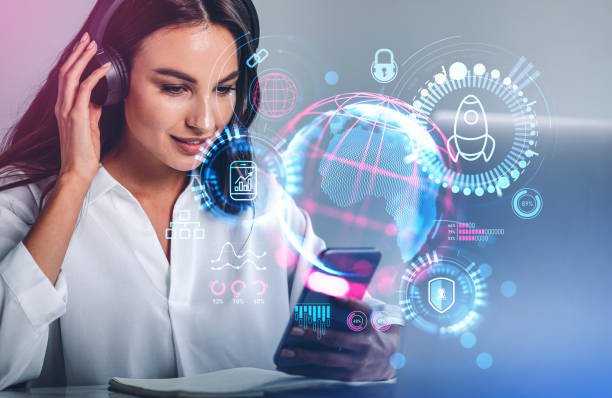what is chat bots
A chatbot is a computer program designed to simulate interactions with human users, especially over the Internet. These artificial intelligence (AI) applications are programmed to understand and respond to user input, provide information, provide assistance or perform tasks within the scope of their programming.
what is chat bots
Chatbots
A chatbot is a computer program designed to simulate interactions with human users, especially over the Internet. These artificial intelligence (AI) applications are programmed to understand and respond to user input, provide information, provide assistance or perform tasks within the scope of their programming. Chatbots can be found across a variety of platforms including websites, messaging apps and customer service interfaces increasing user engagement and automating interactions.
why we need chatbots
1. 24/7 availability
– Chatbots provide around-the-clock availability allowing users to interact and get assistance at any time regardless of time zone or business hours. This enhances the user experience and ensures ongoing support.
2. Efficiency and Automation
– Chatbots automate repetitive tasks saving time and resources for both businesses and users. They can provide instant information, answer common questions and perform routine tasks freeing up human agents for more complex and value-added activities.
3. Quick Responses
– Chatbots provide instant response resolving user queries instantly. This instant feedback contributes to user satisfaction especially in scenarios where quick assistance is necessary.
4. Scalability
– As the number of users increases, chatbots can easily handle large amounts of concurrent interactions. This scalability is especially beneficial for businesses experiencing varying levels of user engagement.
5. Continuous Communication
– Chatbots maintain consistency in communication by following predefined scripts or algorithms. This ensures that users receive standardized information and responses reducing variability in customer interactions.
6. Multitasking Ability
– Chatbots can handle multiple conversations simultaneously by connecting with different users on different topics. This multitasking capability is beneficial for managing high traffic or providing personalized assistance to different users simultaneously.
7. Enhanced User Interaction
– By facilitating interactive and conversational experiences chatbots increase user engagement. They can be programmed to understand user preferences, personalize interactions and guide users through processes or services.
How chatbots work
1. Natural Language Processing (NLP)
– NLP is a core component of chatbots that enables them to understand and interpret human language. This involves analyzing user input, recognizing intent and extracting relevant information to generate an appropriate response.
2. Intent Recognition
– Chatbots use algorithms to identify user intent and understand the purpose behind their input. It involves classifying user questions into predefined categories allowing the chatbot to determine the appropriate response.
3. Entity Identification
- Entities are specific pieces of information within the user's input such as a name, date or location. Chatbots use entity recognition to extract and understand these details enabling more contextually relevant responses.
4. Dialogue Management
- Dialogue management involves maintaining context within a conversation. Chatbots use this ability to understand the flow of conversations, remember past conversations and generate responses tailored to the ongoing discussion.
5. Feedback Generation
– Based on identified intent, extracted entities and context chatbots generate responses using predefined scripts, decision trees or more advanced techniques such as machine learning. These responses are then presented to the user.
6. Integration with systems
– Chatbots often integrate with backend systems or external APIs to obtain information or take actions. For example a customer support chatbot can access a knowledge base or CRM system to provide accurate and updated information.
Challenges in Chatbot Development
1. Natural Language Understanding
2. Reference Management
3. Privatization
4. Integration Complexity
5. User Trust and Transparency
Ultimately chatbots play a vital role in enhancing user experience by automating tasks and providing efficient customer support. As technology advances, solving challenges in natural language understanding, context management and personalization will contribute to the continued improvement and widespread adoption of chatbots across various industries.
Chatbots as an example
A chatbot is a computer program designed to simulate interactions with human users, especially over the Internet. It uses natural language processing and artificial intelligence to understand and respond to user input. for example chat gpt itc .
What's Your Reaction?




















